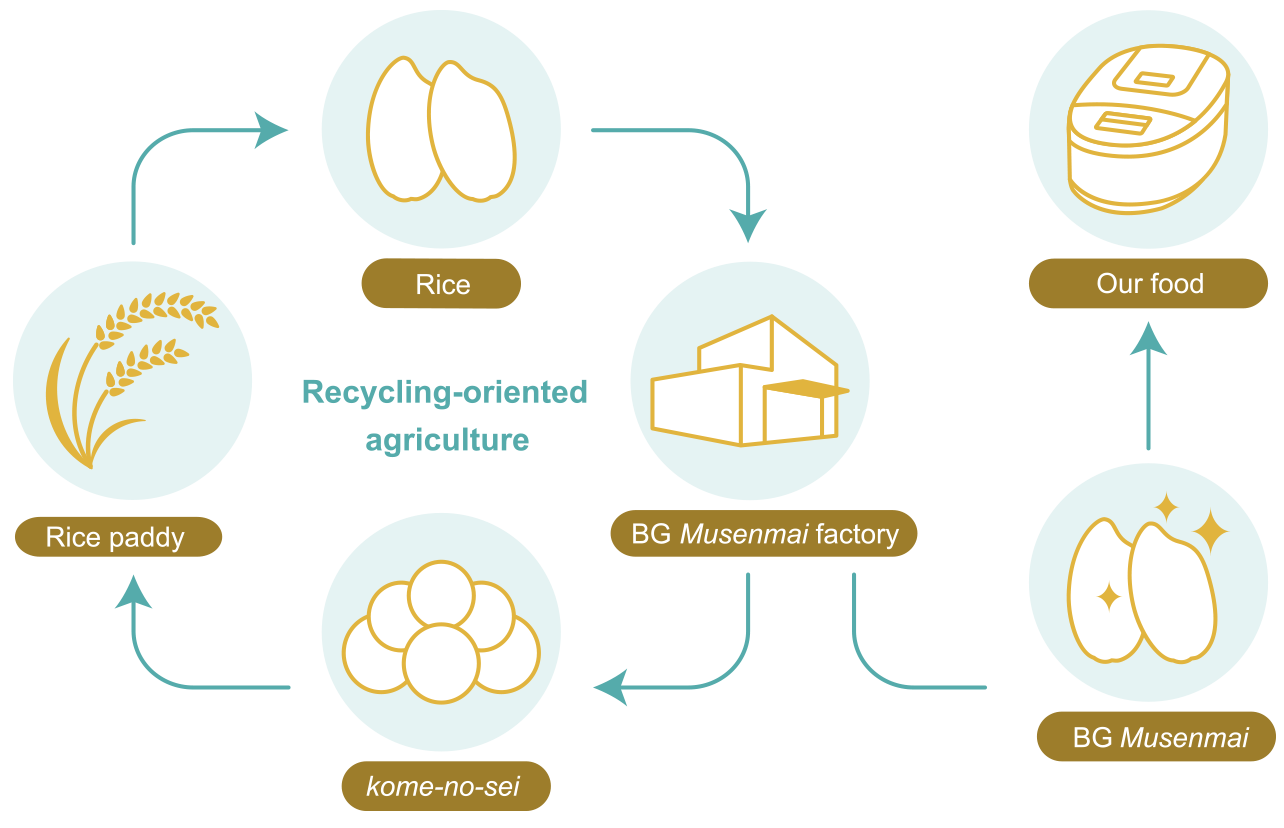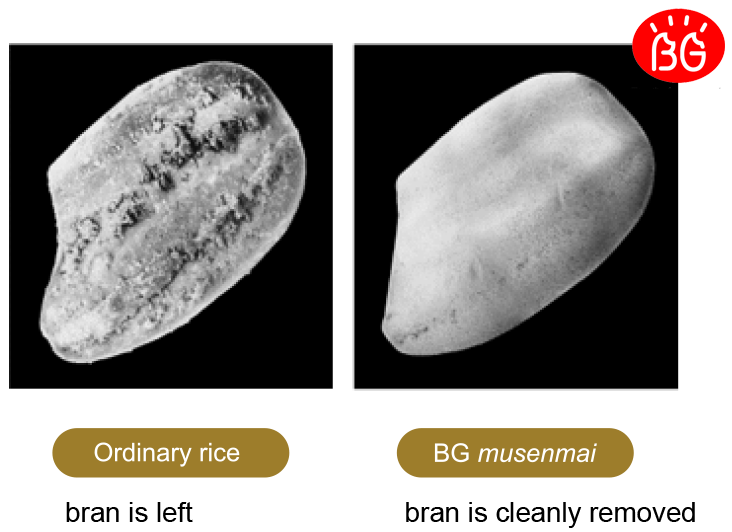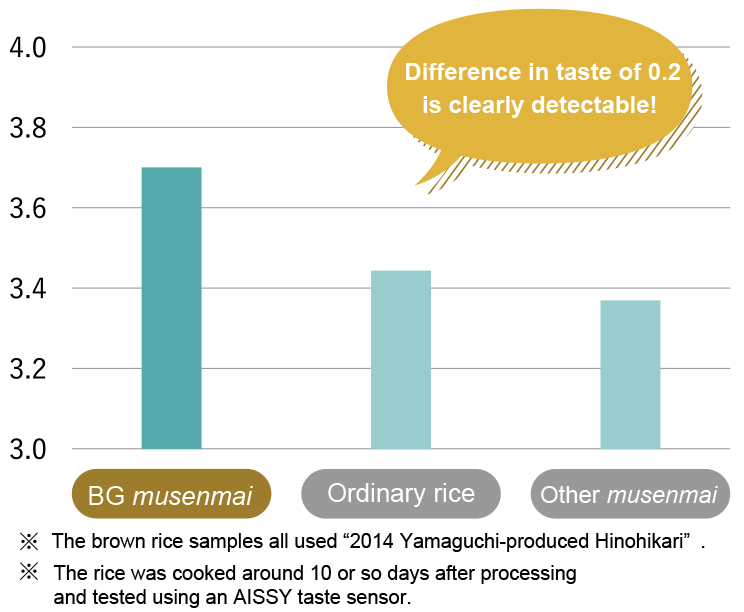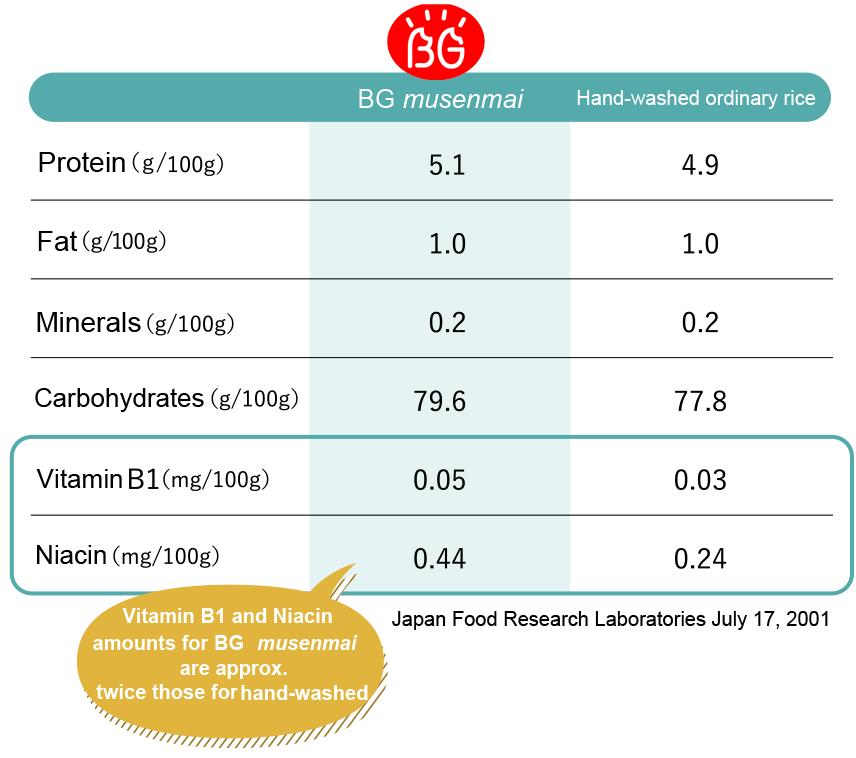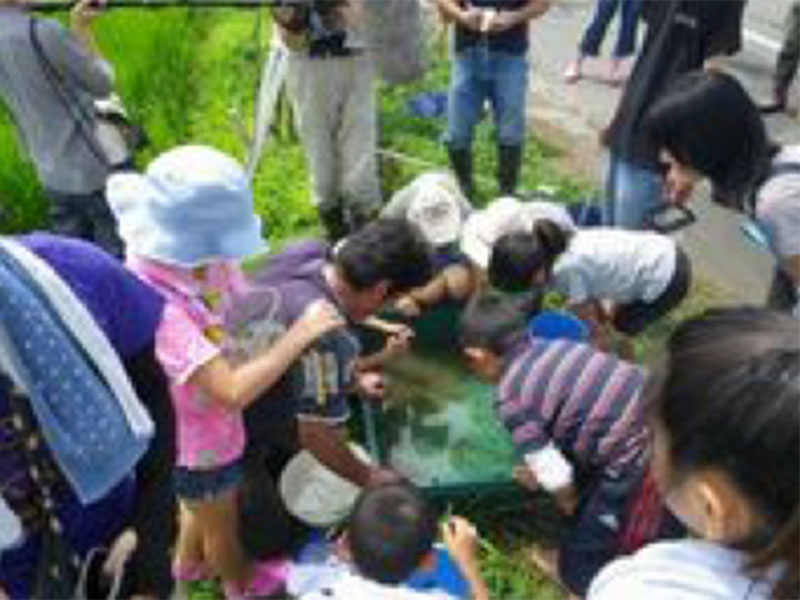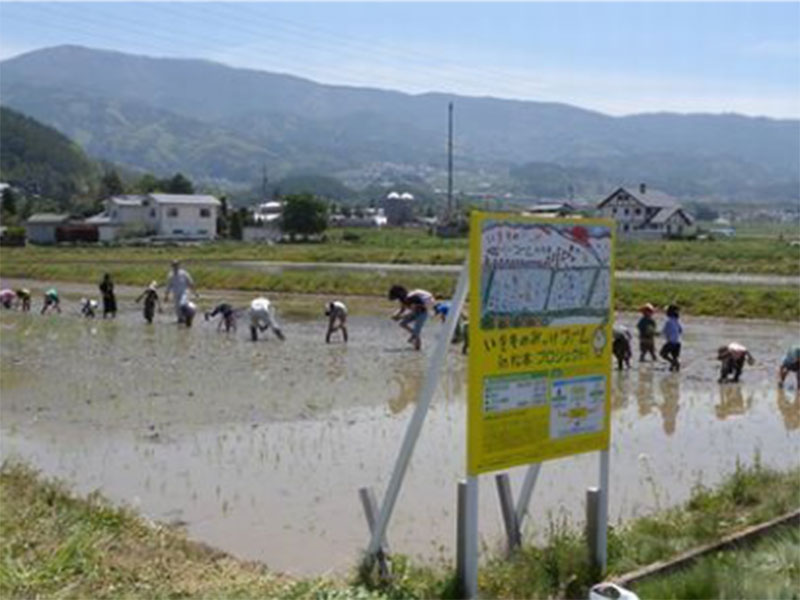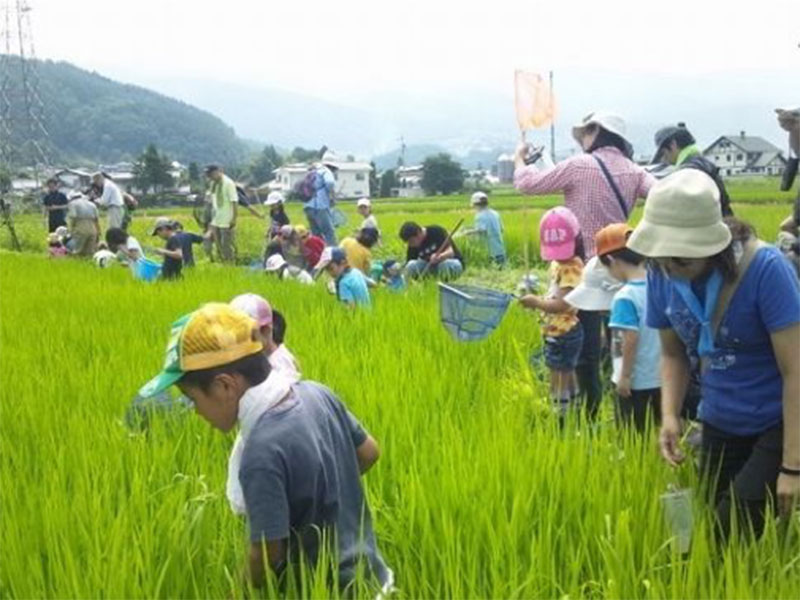What we can do for the future
Developed out of the desire to prevent environmental pollution caused by rice rinsed water, BG musenmai ( rinse-free rice) was born in 1991 as the first rice in the world requiring absolutely no rinse before cooking.
What is BG Musenmai(rinse-free rice)?
BG musenmai(rinse-free rice) is a type of rice from which the rice bran—which is conventionally rinsed off before cooking the rice—is removed in the factory.
To produce conventional rice (polished rice), the germ and bran are removed from brown rice, but sticky fine bran still remains on the surface of the rice. With BG musenmai(rinse free rice), this fine bran is completely removed in the factory, so there is no need to rinse the rice before cooking.
In the first place, BG musenmai (rinse-free rice) is created using the only processing method in the world that neither use rinse water nor additives. This processing method not only provides musenmai(rinse-free rice), but also over the past 27 years has reduced various environmental pollutants—approx. 480,000 tons of CO2, approx. 120,000 tons of BOD; approx. 3,850,000 200-liter barrels of sludge deposits; approx. 100,000 200-liter barrels of oil; and approx. 4,000 tons of phosphorous and nitrogen respectively.
This feature is only BG musenmai(rinse-free rice) achieved,
In recent years, society’s needs have been diversifying, and—as represented by the SDGs (Sustainable Development Goals) that were adopted by the United Nations in 2015 and for which measures are starting to be implemented around the world— construction of a sustainable society from various aspects is urgently needed.producing BG musenmai(rinse-free rice), we realized the various characteristics unique to BG musenmai(rinse-free rice) could contribute enormously to the solution of these environmental problems.
Taking the opportunity presented by the “Musenmai Future Summit”, we wish to proclaim as follows that BG Musenmai(rinse-free rice) is the only “musenmai” capable of achieving these effects, and declare that with your cooperation, we will endeavor to expand usage of BG Musenmai(rinse-free rice), pouring effort into the realization of a sustainable society.










